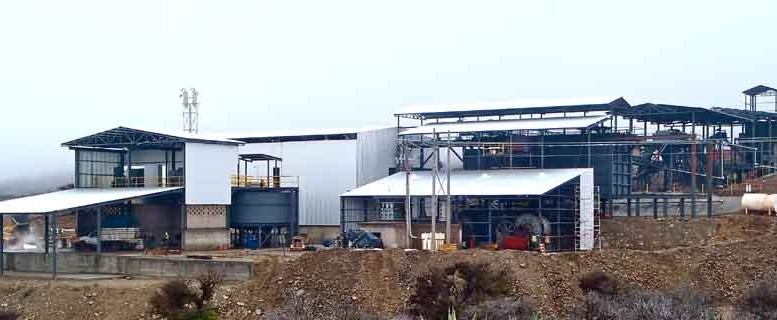For Mexico-focused Santacruz Silver Mining (SCZ-V), 2013 could be the year that well-planted seeds take root and grow. The Vancouver-based company is working on a trio of advanced-stage silver projects with the goal of achieving inaugural production at its polymetallic Rosario deposit — located 184 km north of San Luis Potosi — before April.
Rosario is a 5 sq. km package hosting a low-sulphidation mesothermal vein system notable for high silver grades. The deposit sits in the larger Rey David claim, where Santacruz is operating under an agreement signed in February 2010 that could see the company earn a 100% interest in the project by paying the vendor $2 million before 2014.
A production decision was made on Rosario prior to any feasibility work, though Santacruz expects to release a prefeasibility study in early 2013. The company completed 7,000 metres of diamond drilling on the Rosario I and II veins in 2012 before releasing an updated resource estimate on the project in late December.
Santacruz had a head start in the form of 25,000 metres of historic drilling completed by the Servicio Geologico Mexicano, which allowed the company to graduate a portion of its resource into the measured and indicated categories prior to production.
Rosario’s updated resource totals 270,000 measured tonnes grading 210 grams silver per tonne, 0.94 gram gold per tonne, 3.69% zinc and 1.17% lead for 3.3 million contained equivalent oz. silver. Indicated resources clock in at 711,000 tonnes grading 163 grams silver, 0.88 gram gold, 2.6% zinc and 1.18% lead, for 6.9 million contained equivalent oz. silver.
“The new [resource estimate] on the Rosario project reaffirms management’s expectations based on exploration to date,” president and CEO Arturo Prestamo says. “This resource classification upgrade provides us with more certainty that the [project] will be an emerging silver producer that will be the foundation of the company, as we advance towards becoming a mid-tier silver producer.”
In late May, Santacruz acquired permits for underground development and mine construction at Rosario, which the company said would allow it to reach commercial production by mid-2013.
Santacruz had previously purchased a 500-tonne-per-day plant from Goldcorp (G-T, GG-N) for $800,000, with the intention of commissioning the mill in December.
The company is looking to start an underground operation with the potential to mine the Rosario veins as a small open pit during early stage work, and estimates that start-up costs at Rosario would clock in at $12.4 million.
Both veins remain open along 2 km of untested strike length, and limited drilling has been completed below depths of 200 metres.
Santacruz’s second advanced-stage asset is the San Felipe polymetallic deposit, 130 km northeast of Hermosillo City, Sonora, where Hochschild Mining (HOC-L) completed 18,500 metres of drilling from 2001 to 2008.
Water and environmental permits are already in place at San Felipe, as is an agreement with the local ejido community.
The project includes mesothermal porphyry-intrusive mineralization and hosts 4 million measured and indicated tonnes grading 70 grams silver, 5% zinc, 2.77% lead and 0.28% copper. Resources at San Felipe are defined across three of eight known vein occurrences, including the La Ventana, San Felipe and Las Lamas veins. All three primary veins are open along strike and at depth.
Prestamo says that San Felipe is slated to be Santacruz’s second producing asset, with the 2012 field campaign also raising the company’s expectations on the project’s exploration potential. Santacruz is operating under an agreement that could see it earn a 100% interest in San Felipe by paying $2 million — plus $3 million in exploration expenditures — by 2013.
Santacruz’s final asset is the 100%-owned Gavilanes polymetallic project, which lies 110 km northwest of Durango City, Mexico. Gavilanes was also previously explored by Hochschild — which drilled 3,200 metres at the property — and carries a historic resource containing 1.1 million tonnes at an average grade of 420 grams silver per tonne.
Gavilanes also hosts 475 metres of underground mine development through adits, which allows the company access to known mineralization.
Santacruz carried out a 6,000-metre diamond drill program at the site in 2012, focused on the Guadalupe-Soledad-Aranzazu (GSA) and San Nicholas veins. The company released assays from seven holes collared at the GSA vein on Nov. 20, with highlights including: 2.8 metres grading 2,540 grams silver, 0.1% zinc, 0.12% lead from 109 metres depth in hole 22; and 1.55 metres averaging 212 grams silver, 8.09% zinc, 3.97% lead and 0.72 gram gold from 109 metres depth in hole 21.
Santacruz raised $20 million in April, and reported $12 million in cash and equivalents in the latter half of 2012.
The company has a 52-week range of 80¢ and $2.50, and started out 2013 trading by closing at $2.20 per share at press time. Santacruz has 68 million shares outstanding and a $150-million press-time market capitalization.


Be the first to comment on "Santacruz Silver on the fast track"